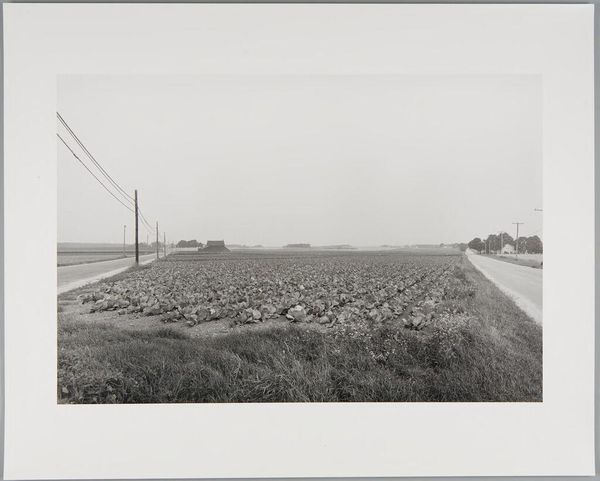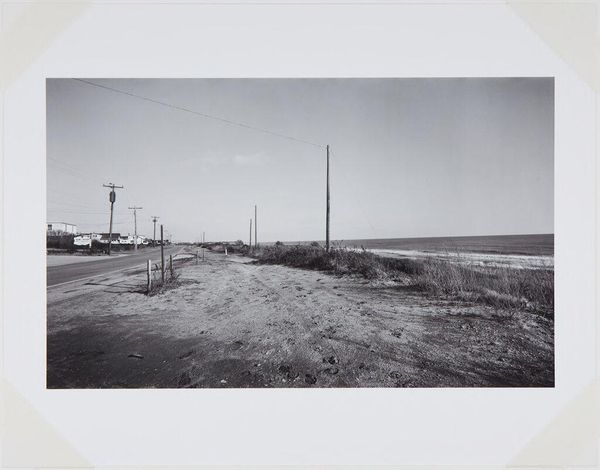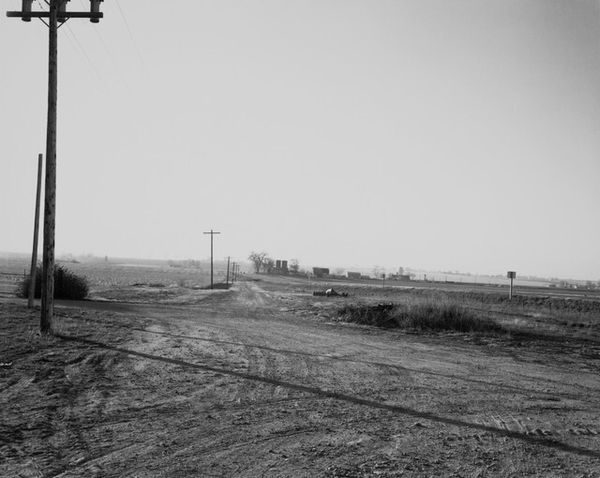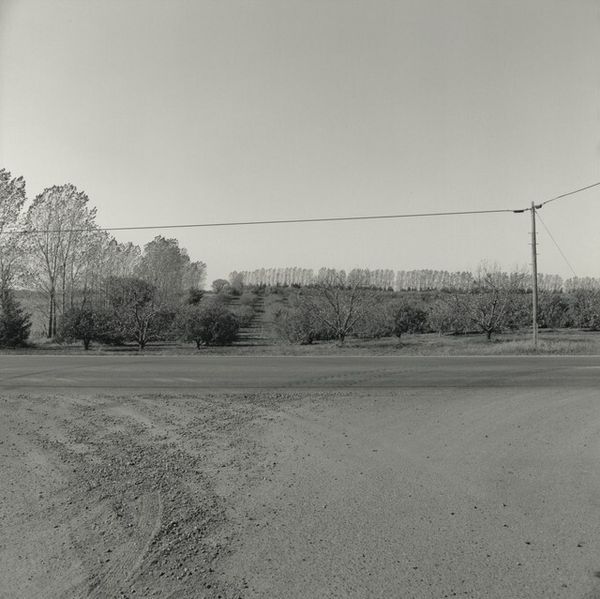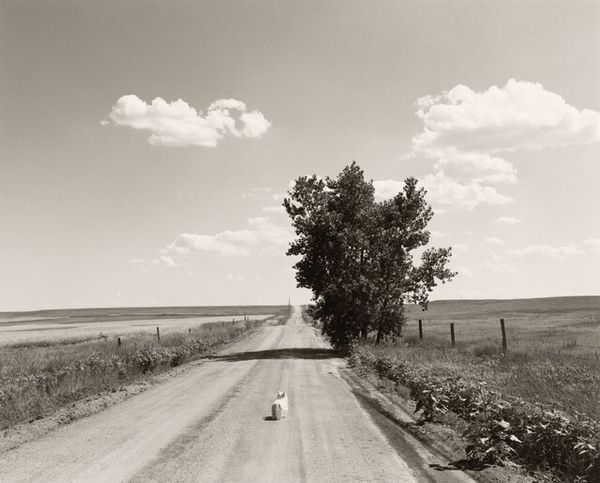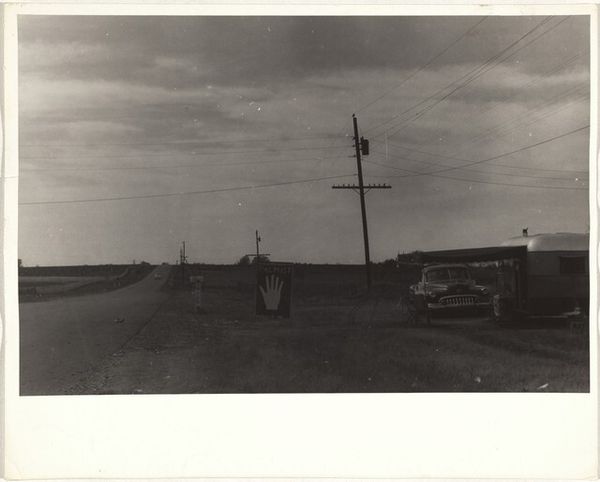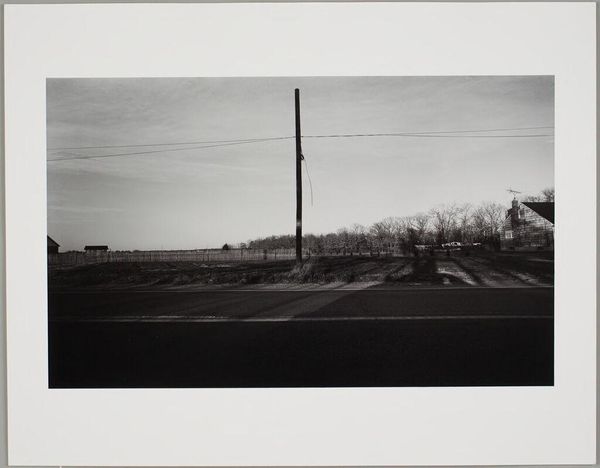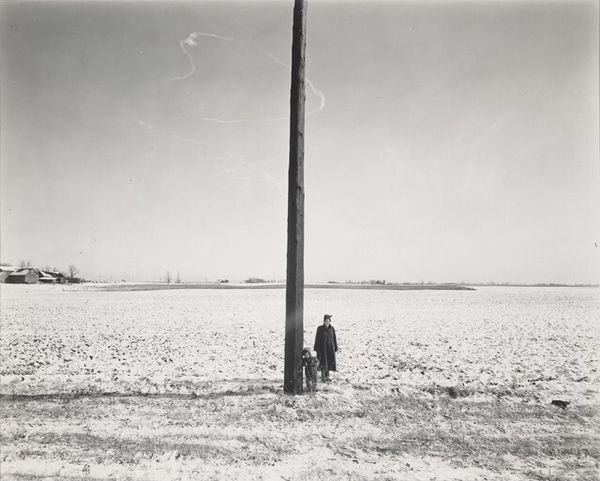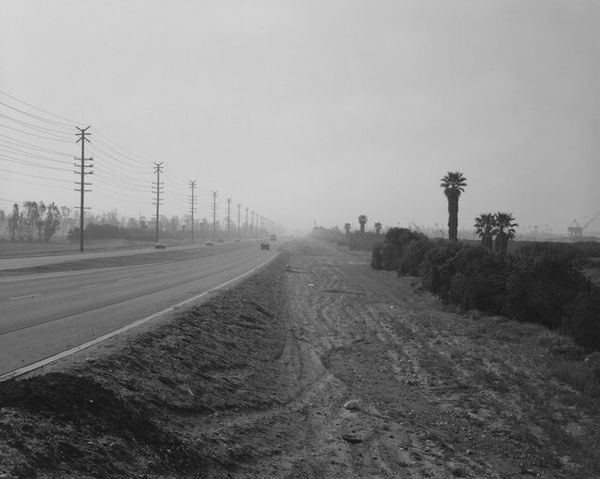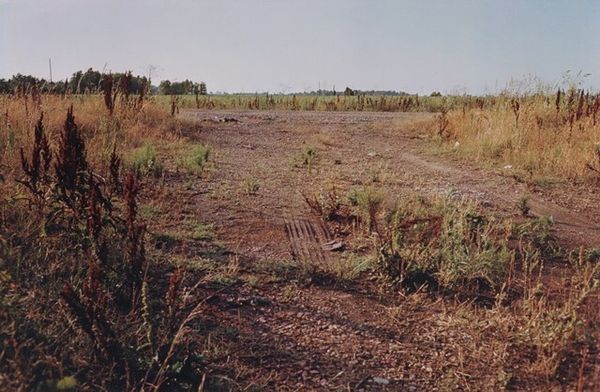
Landscape-Road and Two Grain Elevators-Near Kinsley, Kansas Possibly 1973 - 1981
0:00
0:00
photography, gelatin-silver-print
#
black and white photography
#
landscape
#
black and white format
#
street-photography
#
photography
#
black and white
#
gelatin-silver-print
#
monochrome photography
#
monochrome
#
modernism
#
realism
#
monochrome
Dimensions: image: 14 x 14 in. (35.6 x 35.6 cm) sheet: 50.6 x 40.6 cm (19 15/16 x 16 in.)
Copyright: National Gallery of Art: CC0 1.0
Editor: This is "Landscape-Road and Two Grain Elevators-Near Kinsley, Kansas" by Frank Gohlke, possibly from the 70s. It’s a gelatin-silver print; very stark. What I notice most is the long, empty road – it really emphasizes the scale of the landscape, but also how the industry relates to the landscape and our impact on it. How would you interpret this photograph? Curator: Well, considering the context – a roadside in Kansas – the gelatin-silver print is key. Think about it: it's a reproducible medium, reflecting mass production, challenging the aura of the unique art object. These grain elevators aren’t just objects in the landscape, but testaments to industrialized agriculture, shaping not just the land, but the labor tied to it. Notice how Gohlke flattens the perspective? It's almost like he's resisting the picturesque, focusing instead on documenting the structures *within* this space and the evidence of how we have materially impacted our landscape.. Editor: So, it's not just a pretty picture; it’s making us think about industry’s influence. Are you saying the choice of black and white and the gelatin-silver process themselves become part of the message? Curator: Precisely! It pushes us to think about how photographic materials can speak to social realities and economic systems that mass-produce structures of utility *and* the images representing them. It begs the question: what is valued more here—the land itself or what is yielded and produced by the land? Editor: That's a powerful way to think about it; I hadn't considered how the medium itself is communicating. I think I will approach photography a lot differently now. Curator: That's exactly it! This shifts the focus from what’s *represented* to *how* it's represented, uncovering layers of meaning we might otherwise miss.
Comments
No comments
Be the first to comment and join the conversation on the ultimate creative platform.
